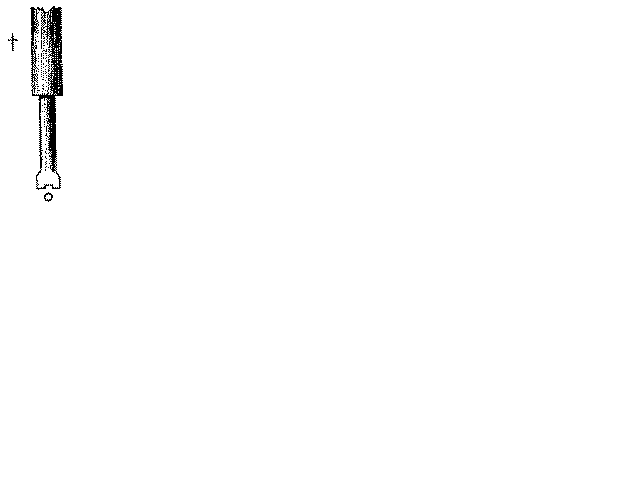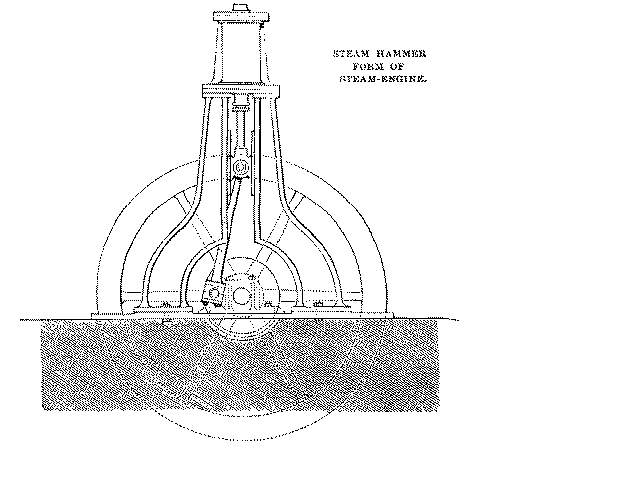A Machine for cutting out Cottar Slots and Key-Groove Recesses in Parts of Machinery by a Traversing Drill.
One of the most tedious and costly processes in the execution of the detail parts of machinery is the cutting out of Cottar Slots in piston rods, connecting rods, and key recesses in shafts. This operation used to be performed by drilling a row of holes through the solid body of the object, and then chipping away the intermediate metal between the holes, and filing the rude slot, so produced, into its required form. The whole operation, as thus conducted, was one of the most tedious and irksome jobs that an engineer workman could be set to, and could only be performed by those possessed of the highest skill.
What with broken chisels and files, and the tedious nature of the work, it was a most severe task to the very best men, not to speak of the heavy cost in wages.
In order to obviate all these disadvantages, I contrived an arrangement of a drilling machine, with a specially formed drill, which at once reduced the process to one of the easiest conducted in an engineer's workshop.

- The. "special" form of the Drill consisted in the removal of the centre portion of its flat cutting face by making it with a notch O. This enabled it to cut sideways,+, as well as downwards, and thus to cut a slit or oblong hole. No labour, as such, was required; but only the intelligent superintendence of a lad to place the work in the machine, and remove it for the next piece in its turn. The machine did the labour, and by its self-action did the work in the most perfect manner.
I may further mention that the arrangement of the machine consisted in causing the object to traverse to and fro in a straight line, of any required length, under the action of the drill. The traversing action was obtained by the employment of an adjustable crank, which gave the requisite motion to a slide table, on which the work was fastened, The "feed" downwards of the drill was effected by the crank at the moment of its reversing the slide, as the drill reached the end of the traverse; and, as there is a slight pause of the traverse at each end of it, the "feed" for the next cutting taking place at that time, the drill has the opportunity given to perfect its cut ere it commences the next cutting traverse in succession. This action continues in regular course until the drill makes its way right through the piece of work under its action; or can be arrested at any required depth according to the requirements of the work. Soap and water as a lubricator continues to drop into the recess of the slot, and is always in its right place to assist the cutting of the drill.
As before said, the entire function of this most effective machine tool is self-acting. It only required an intelligent lad or labourer to attend to it; and, as there was ample time to spare, the superintendence of two of these machines was quite within his ability. The rates of the productive powers of this machine, as compared with the former employment of hand labour, was at least ten to one; to say nothing of the superior quality of the work executed.
Such were the manifold advantages of this machine, that its merits soon became known and appreciated; and although I had taken out no patent for it, we always had an abundance of orders, as it was its own best advertisement.
A Steam Hammer Form of Steam-Engine.

- This engine is of great simplicity and get-at-ability of parts. It is specially adapted for screw-propelled steamships, and many other purposes. It is now in very general use. The outline is given above.
Application of Hydraulic Power to the Punching of Large Holes in Iron Bars, and Plates of Great Thickness.
Dr. Faraday having applied to me to furnish him, for one of his lectures at the Royal Institution, with some striking example of the Power of Machinery in overcoming the resistance to penetration in the
| Previous chapter/page | Back | Home | Email this | Search | Discuss | Bookmark | Next chapter/page |